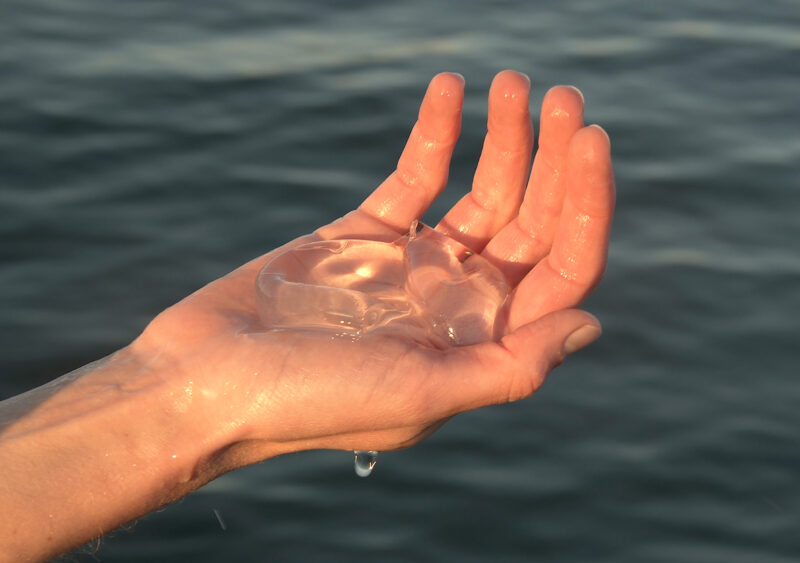DE
As Earliest Carrier Emerge ist eine installative Duo-Ausstellung von Kristina Õllek und Kert Viiart, die die Geschichte des Grand Palais Bern als Wartesaal mit einer durchscheinenden, aquatischen und fossilen Umgebung verbindet. Die Ausstellung zeigt die gleichnamige Videoinstallation (2024), die Fiktion und Dokumentarfilm verbindet, um die Welt aus der Perspektive der Ctenophoren (Kammquallen) zu erforschen – den frühesten Tieren, die sich vor etwa 700 Millionen Jahren auf der Erde entwickelt haben. Ctenophoren trieben damals wie heute durch die Gewässer. Die durchsichtigen und gallertartigen Ctenophoren sind äußerst widerstandsfähig und können unter einer Vielzahl von Umweltbedingungen überleben und sich selbst befruchten.
In den frühen 1980er Jahren gelangten sie über das Ballastwasser von Schiffen an die Atlantikküste Nord- und Südamerikas ins Schwarze Meer, wo sie erhebliche Auswirkungen auf das aquatische Ökosystem hatten. Innerhalb eines Jahrzehnts breiteten sie sich im Kaspischen Meer und in allen europäischen Meeren aus und gehören inzwischen zu den „100 invasivsten Arten der Erde“. Obwohl sie Träger von Leben sind, gelten sie als berüchtigte „Eindringlinge“ in Ökosysteme. Aber was gilt als „invasive“ Art? Wer „ invasiert “ wen?
Die Ausstellung ist zusätzlich unterstützt vom Cultural Endowment of Estonia.
EN
As Earliest Carrier Emerge is an installative duo exhibition by Kristina Õllek and Kert Viiart, merging Grand Palais Bern’s history of being a waiting room into a translucent, aquatic, and fossilized environment. The exhibition features the same-titled video installation (2024), which blends fiction with documentary to explore the world from the perspective of Ctenophores (comb jellies) – the earliest animals to evolve on Earth, approximately 700 million years ago. Ctenophores drifted through the waters both then and now. Transparent and gelatinous, Ctenophores are a highly resilient and capable of surviving in a wide range of environmental conditions and of self-fertilizing.
They arrived the Atlantic coast of North and South America in the Black Sea in the early 1980s through ballast water from ships, where they had a significant impact on the aquatic ecosystem. Within a decade, they spread to the Caspian Sea and all European seas and have now been listed among the „100 most invasive species on Earth”. While being the carrier of life, they’ve become seen as the notorious ecosystem “invader”. But what counts as “invasive“ species? Who „invades“ who?
The exhibition is supported by Cultural Endowment of Estonia.

